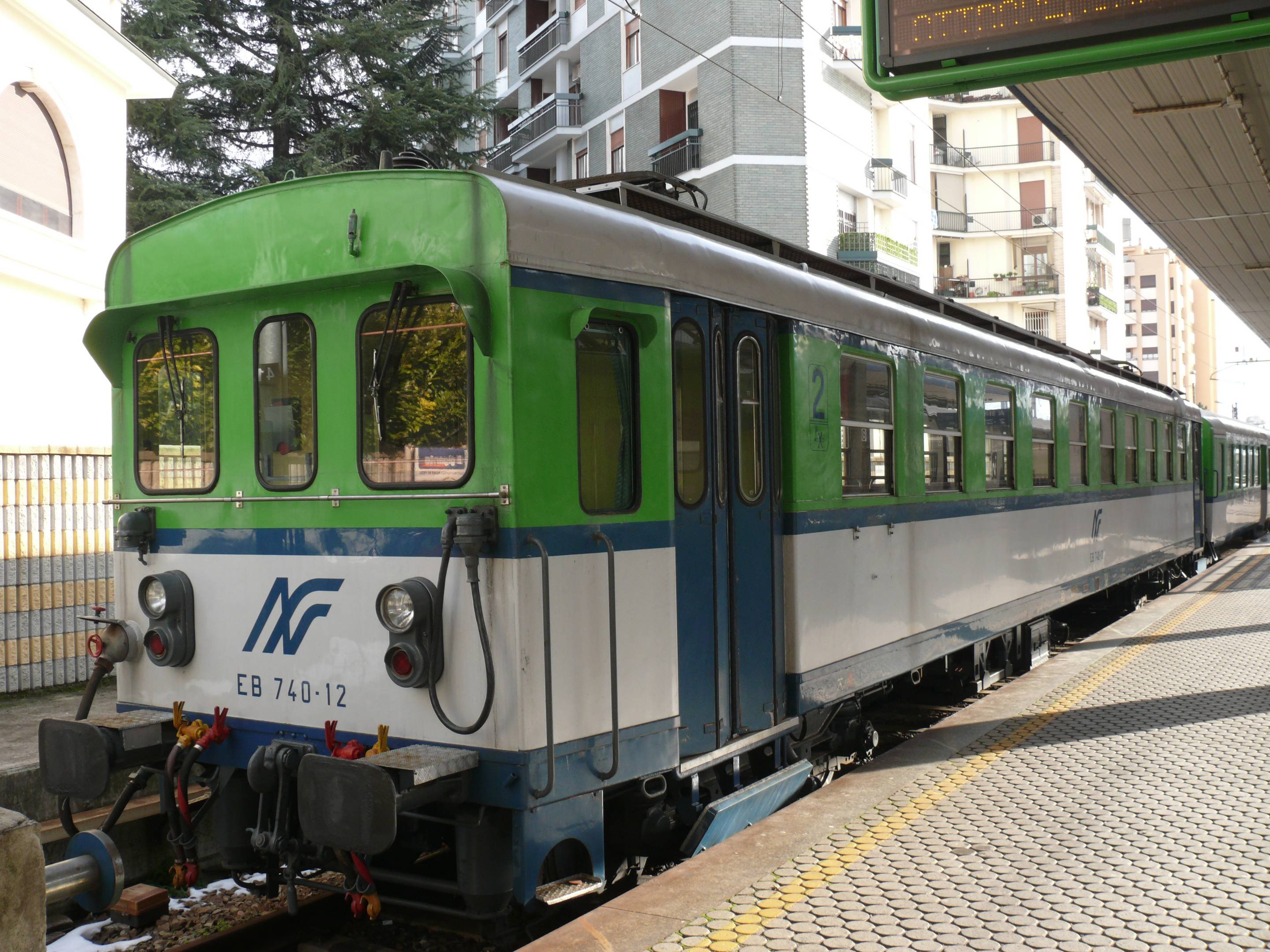Concurrent with the delivery of the first E 700s, between 1928 and 1932 a number of class E 800 control trailers were also supplied. After 1937, with the arrival of 6 much lighter pilot trailers of a new standardised type in stainless steel, a number of 800 trailers were converted into electric railcars. Between 1953 and 1957, 17 class 740 electric railcars with a simple welded steel frame were gradually introduced to service. They looked identical to the standardised trailers. They were added to the seven 740s gained through motorisation of the first trailers of the 1930s. They weighed between 52 and 53 tons when empty. They were standardised in length and arrangement of the doors, which were positioned at the ends behind the driving cabs. The doors were electro-pneumatically operated. They were fitted out as third class only cars (later to become second). They were mounted on Commonwealth-type motor bogies, replaced a few decades later with motor bogies derived from Minden Deutz.
E-740

- Progettazione: 1953
- Costruzione: 1953-1957
- Esercizio: 1953-2012
- Massa a vuoto: t.52-53
- Rodiggio: Bo + Bo
- Costruttore: BREDA - Milano
- Lunghezza fuori tutto: 22.720-23.320 mm
- Larghezza: 2.900 mm
- Posti a sedere: 80-100
- Velocità massima: 80 Km/h
- Interperno carrelli: 13.900 mm
- Passo carrelli: 2.500 mm
- Ruote Ø: 1.000 mm
- Altezza imperiale: 3.700 mm
- Alimentazione (condutture): 3 kV CC
- Design date: 1953
- Build date: 1953-1957
- Service date: 1953-2012
- Tare weight: 52-53 tons
- Wheel arrangement: Bo-Bo
- Builder: BREDA - Milan
- Overall length: 22,720-23,320 mm
- Width: 2,900 mm
- Passenger capacity: 80-100
- Maximum speed: 80 Km/h
- Distance between bogie centres: 13,900 mm
- Bogie wheelbase: 2,500 mm
- Wheel Ø: 1,000 mm
- Roof height: 3,700 mm
- Voltage (power lines): 3 kV CC
The interiors were divided into 2 compartments, smoking and non-smoking. The E 740s with lightweight bodies should not be confused with the E 740s obtained through the motorisation of the 800 trailers with riveted frame (E 740-01 - 07). The interior furnishing of what was originally third class and later second class remained very basic. It consisted of a welded tubular frame with a seat which was no longer in slats but in continuous varnished wood. They were arranged in rows of 2 and 3 seats with slightly shaped backrests. Luggage racks with nets running lengthwise above the windows; incandescent lighting. Over the years both the engines and the trailers underwent continuous modernisation. The seats were upholstered, the lighting was converted to neon, the net of the luggage racks was replaced by metal structures. The original windows were replaced by more modern Klein-type windows. The motor bogies were also replaced with a more modern model derived from Minden Deutz. The livery was also altered; first orange and grey, and then green and grey.

